Instructional Series
This site will be closing soon as its content has moved to Tāhūrangi.
2024 titles are available on Tāhūrangi. Use the filters to find specific series.
Find Literacy resources at Tāhūrangi - Literacy.
Welcome to the English medium literacy instructional series teaching and learning resources for years 1 to 8.
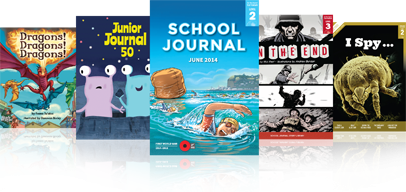
- Gold
- Purple
- 2
- 4
- 3
- 1
- 3
- 6
- 8
- 4
- 5
- 1
- 7
- English
- Technology
- Science
- Mathematics and Statistics
- Social Sciences
- The Arts
- Health and Physical Education
- Non-fiction
- Fiction
- None
- Nature of technology
- Statistics
- Nature of science
- Geometry and Measurement
- Technological knowledge
- Living world
- Physical world
- Number and Algebra
- Technological practice
- Material world
- Planet Earth and beyond
- Engage with science
- Interpret representations
- Articles
- Stories
- Plays
Search results
55 items - Showing 11 - 20
-
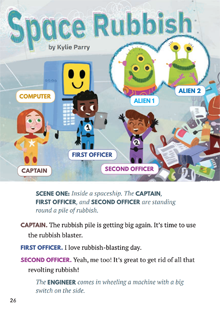
Space Rubbish
by Kylie Parry, Illustrations by Jez Tuya
This humorous science-fiction play is set on a spaceship in the future. When the crew’s rubbish-blasting machine stops working, they are intrigued to find out how people used to deal with their rubbish in the “old days”.
-
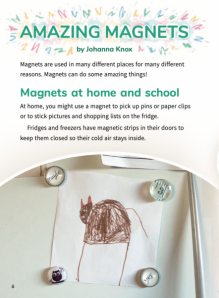
Amazing Magnets
written by Johanna Knox
“Amazing Magnets” describes some ways that magnets are used at home, at school, and in industries. It follows on from the earlier article “The Invisible Force”, which describes some of the characteristics of magnets. There are several further pieces on the topic of magnetism in this journal: a series of science experiments and activities and a humorous story.
-
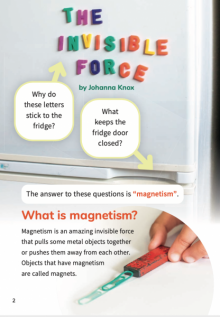
The Invisible Force
written by Johanna Knox
“The Invisible Force” describes some of the characteristics of magnets and how these characteristics were first discovered and used. There are several other pieces on the topic of magnetism in this journal: a report that describes some ways that people use magnets today, a series of science experiments and activities, and a humorous story.
-
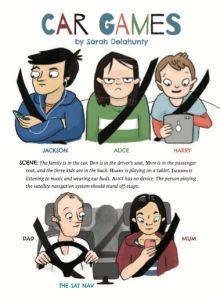
Car Games
by Sarah Delahunty
illustrations by Giselle Clarkson
This play is about the digital devices used by a family on a car trip. While this scenario may be outside the experience of some students, it will resonate with many who have travelled in a car with their family, been involved in sibling squabbles, or been more interested in a device than on interacting with their parents.
-
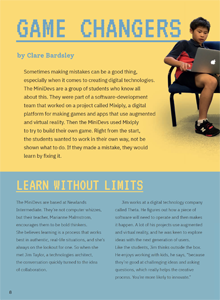
Game Changers
by Clare Bardsley
The students at Newlands Intermediate have learnt that creating successful digital technologies requires a realistic, think-small approach – and that it’s OK to make mistakes. As well as attempting to build their own game, they were also part of a real-world software development team that developed and tested Mixiply, a platform for making games and apps that use augmented and virtual reality.
-
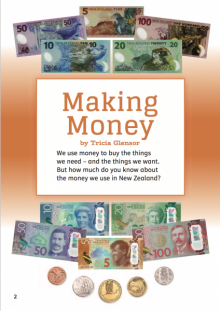
Making Money
by Tricia Glensor
This report is about New Zealand money, explaining where our money comes from and how and why the notes and coins have changed over time. It also describes the security features on the banknotes.
Gold 1
-

The Ukulele Maker
by Bronwen Wall
Dave Gilberd is a luthier, a maker of stringed instruments. This report describes how Dave makes a ukulele. A note at the end of the report provides additional information about how the ukulele got its name.
This journal includes a linked article, “The Kiwileles”, which provides information about students who play in a ukulele orchestra.
-

Designed for Good
by Philip Cleaver
The New Zealand environment has been badly affected by introduced pests such as rats, stoats, and possums. “Designed for Good” follows the process of developing an effective and humane trap to reduce these pest populations. The article tells the story of the project, from the first “That’s it!” moment through to the production of thousands of traps, which are now in use throughout New Zealand.
-
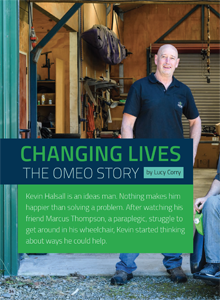
Changing Lives: The Omeo Story
by Lucy Corry
Kevin Halsall is an engineer and inventor who likes to solve problems. Over a four-year period, he designed and built the Omeo: a ground-breaking mobility device that gives people much greater freedom than a traditional wheelchair. In this article, Kevin discusses his motivation and design process, and his friend Marcus shares the impact the Omeo has had on his life.
-
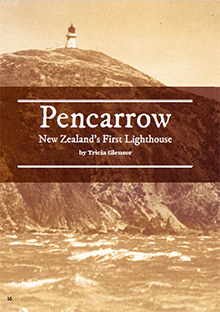
Pencarrow: New Zealand’s First Lighthouse
by Tricia Glensor
New Zealand’s coastline has always been a dangerous place for ships and boats. Early Māori knew that. Several traditional stories tell of waka being washed onto rocks in storms. Since the 1790s, when the first Pākehā reached New Zealand, more than 2,300 ships have been wrecked in New Zealand waters.





 Literacy Online home
Literacy Online home
